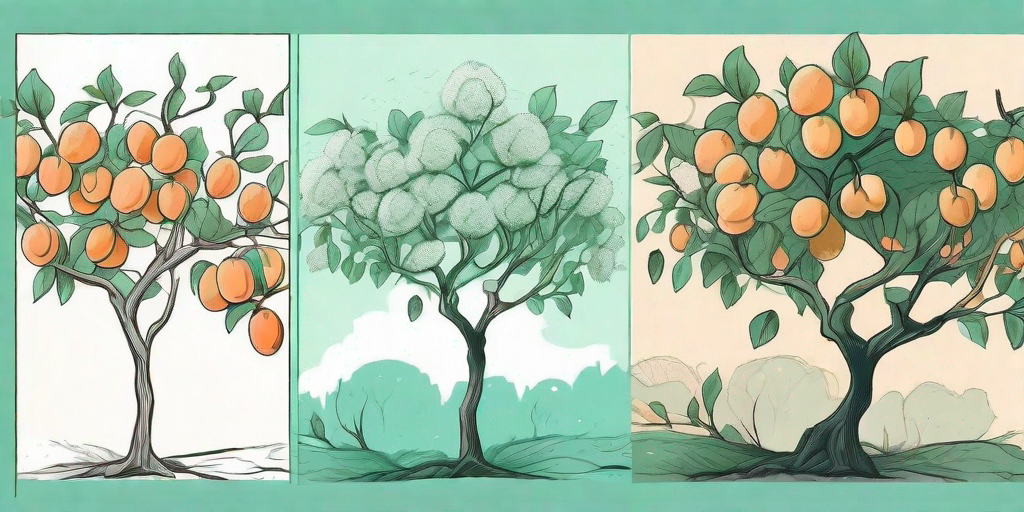
The life of an apricot tree is a captivating tale of transformation. From a tiny seed to a blossoming tree, and finally to the production of the juicy, sweet fruit we all love - the apricot. This journey is not only a marvel of nature but also a testament to the resilience and adaptability of these hardy trees. So, buckle up, dear reader, as we embark on this botanical journey that's as sweet as the apricot itself.
The Birth of an Apricot Tree: From Seed to Sapling
Planting the Seed
Our journey begins with a tiny, unassuming apricot seed. This little guy may not look like much, but don't be fooled. Inside this seed lies the potential for a towering tree laden with delicious fruit. The seed is planted in well-drained soil, preferably in a sunny location. After all, who doesn't enjoy a bit of sunbathing?
With a bit of water, the right temperature, and a whole lot of patience, the seed begins to germinate. This process can take anywhere from a few weeks to a couple of months. So, if you're the impatient type, you might want to take up knitting in the meantime.
The Growth of the Sapling
Once the seed has germinated, it begins its transformation into a sapling. This is where the magic really starts to happen. The seedling will grow leaves and start to look more like a tree. It's like watching a baby take its first steps, only a lot slower and without the cute giggles.
During this stage, the sapling needs plenty of water and nutrients to grow. It's like a teenager, always hungry and growing like a weed. But unlike a teenager, it won't roll its eyes at you when you tell it to clean its room.
The Blossoming of the Apricot Tree
The Arrival of Spring
As winter fades and spring arrives, the apricot tree begins to blossom. This is the tree's way of saying, "Hey, look at me! I'm ready to make some fruit!" The blossoms are a beautiful sight, with their delicate petals and vibrant colors. It's like nature's version of a fireworks display.
But these blossoms aren't just for show. They're also the tree's way of attracting pollinators. Bees, butterflies, and other insects are drawn to the blossoms, helping to pollinate the tree and set the stage for fruit production. It's a win-win situation: the tree gets pollinated, and the insects get a tasty treat.
The Pollination Process
Pollination is a crucial step in the journey of an apricot tree. Without it, there would be no fruit. It's like trying to bake a cake without any flour. Sure, you could try, but the results wouldn't be very appetizing.
The process of pollination involves the transfer of pollen from the male parts of a flower to the female parts. This fertilizes the flower and allows it to produce fruit. It's a bit like a botanical version of online dating, only with less awkward small talk and more bees.
The Fruit of the Apricot Tree
The Formation of the Fruit
Once the tree has been pollinated, it's time for the fruit to start forming. This process takes several weeks and involves the growth and development of the fruit from a tiny ovule to a full-sized apricot. It's like watching a time-lapse video of a building being constructed, only much slower and with fewer hard hats.
The fruit continues to grow and ripen until it's ready to be harvested. This usually happens in the summer, when the fruit is at its sweetest. It's the tree's way of saying, "Hey, I made this for you. Enjoy!"
The Harvesting of the Apricots
Harvesting the apricots is the final step in the journey of an apricot tree. This is when all the hard work pays off and you get to enjoy the fruits of your (or rather, the tree's) labor. It's like finishing a marathon and finally getting to enjoy that post-race banana, only much tastier and without the sore muscles.
The apricots are picked when they're fully ripe and ready to eat. They can be enjoyed fresh, or used in a variety of recipes. From jams and jellies to pies and tarts, the possibilities are endless. It's like having your own personal fruit buffet, only without the sneeze guard.
FAQs
How long does it take for an apricot tree to bear fruit?
It typically takes about 2-5 years for an apricot tree to start bearing fruit. So, if you're planning on planting an apricot tree, you might want to get started sooner rather than later. After all, good things come to those who wait.
Do apricot trees need a lot of care?
Apricot trees do require some care, but they're not overly demanding. They need regular watering, especially during dry periods, and they benefit from annual pruning to maintain their shape and health. It's a bit like having a pet, only without the fur and the need for walks.
Can I grow an apricot tree in my backyard?
Yes, you can! Apricot trees can be grown in a variety of climates, as long as they get plenty of sun and have well-drained soil. So, if you've got a sunny spot in your backyard and a green thumb, why not give it a try? You might just end up with your own personal apricot orchard.
Conclusion
And there you have it, folks: the journey of an apricot tree from blossom to fruit. It's a fascinating process that showcases the wonders of nature and the deliciousness of fresh fruit. So, the next time you bite into a juicy apricot, take a moment to appreciate the journey it took to get to your plate. Bon appétit!











